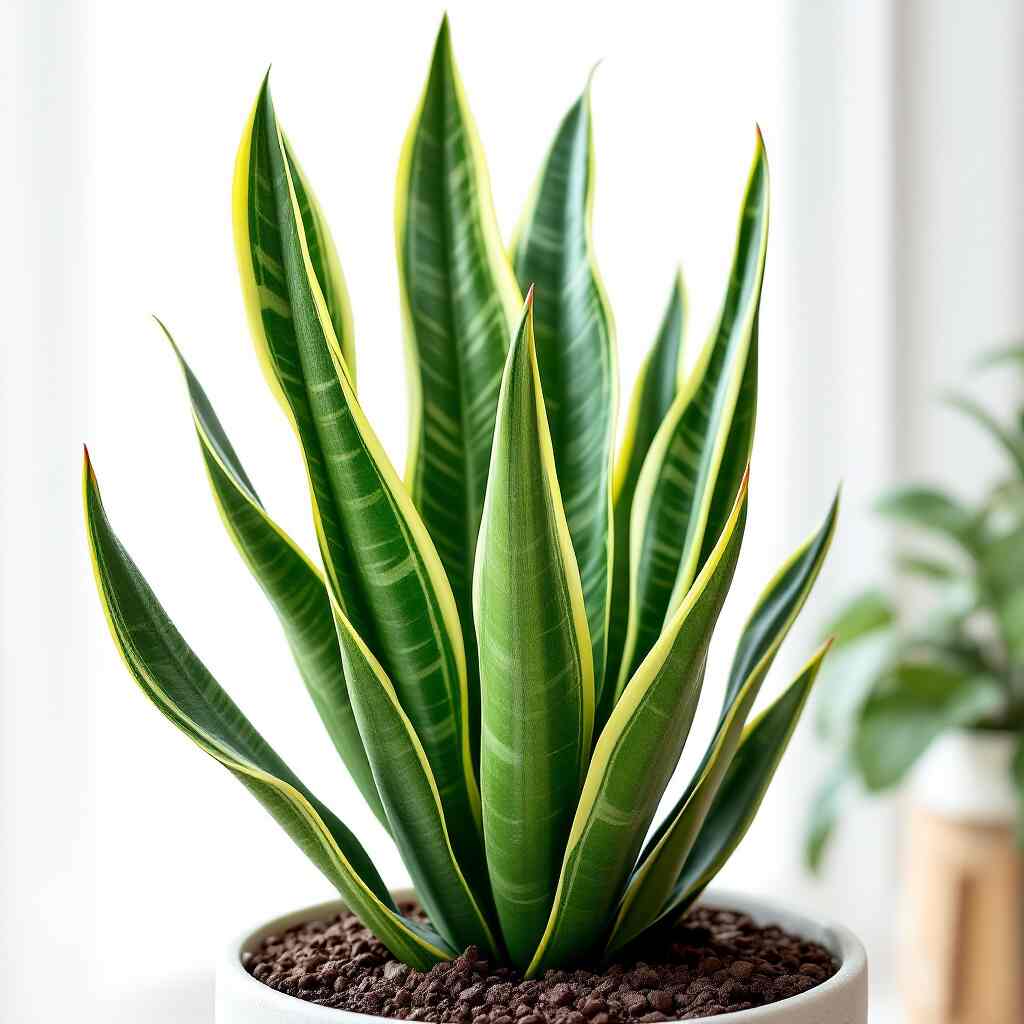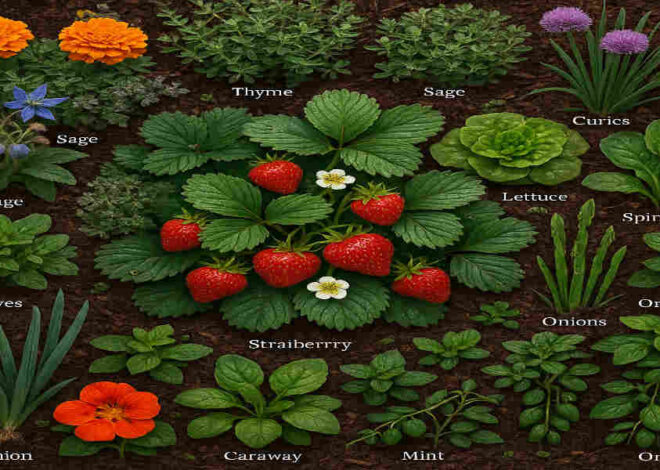
Beginner’s Guide to Propagating Snake Plants at Home: Simple Steps
Welcome to the world of snake plants, a popular choice for indoor gardeners due to their striking appearance and air-purifying qualities. Known scientifically as Dracaena trifasciata and formerly as Sansevieria trifasciata, snake plants are celebrated for their minimal maintenance needs and resilience.
Whether you are a novice in gardening or looking to broaden your plant care skills, this step-by-step guide will equip you with all the necessary knowledge to propagate your snake plants successfully.
What is a Snake Plant?

Botanical Background
The snake plant, Dracaena trifasciata, belongs to the Asparagaceae family and has been a staple in homes for its adaptability and hardiness. It features stiff, upright leaves that can grow several feet tall, offering a sculptural element to any indoor space.
Key Features
Snake plants are easily recognizable by their sword-shaped leaves that proudly stand upright. They are not just decorative; these plants are also excellent for improving indoor air quality by filtering out pollutants, making them a perfect addition to any home or office.
Benefits of Growing Snake Plants
The benefits of having snake plants in your home go beyond their aesthetic appeal. They are known for their ability to purify the air and improve indoor environments, making them an ideal choice for a healthier home.
Why Propagate Snake Plants?
Advantages of Propagation
Propagation can be a fun, rewarding, and economical way to expand your plant collection. It also contributes to the sustainability of your gardening practices by allowing you to reuse plant parts to generate new plants.
When and Why to Propagate
You might consider propagating your snake plant when it appears too crowded in its pot or starts to lose its vigor. Propagation can help rejuvenate your plant and give it a new lease on life.
Common Reasons for Propagation
Beginners often find snake plant propagation an excellent starting point due to its simplicity and high success rate, which provides a gratifying experience without the complexities of more sensitive plants.
Essential Tools and Materials
Before you begin the propagation process, gathering the right tools and materials is crucial for success. Here’s what you’ll need:
- Tools: Clean scissors or pruning shears, pots, and possibly rooting hormone to enhance root growth.
- Materials: A well-draining potting mix, preferably with added perlite or sand, is essential to ensure good drainage and prevent root rot.
- Workspace Preparation: Ensure your workspace is clean to avoid infecting the plants with pathogens.
Understanding Snake Plant Propagation Methods
Let’s explore the several methods available for propagating snake plants, each with benefits and suitable scenarios.
- Leaf Cuttings in Soil and Water: This is the most popular method due to its simplicity. Leaves are cut and placed in Soil or Water until they develop roots.
- Division: This method physically separates the plant into multiple parts, each with its root system.
- Offsets or Pups: Small snake plants grow from the mother plant’s base and can be separated and planted independently.
| Method | Ease | Speed | Success Rate | Ideal Situation |
|---|---|---|---|---|
| Leaf Cuttings in Soil | Easy | Slow | High | Most common situations |
| Leaf Cuttings in Water | Easy | Slow | Medium | For visual monitoring |
| Division | Medium | Fast | Very High | Overcrowded plants |
| Offsets (Pups) | Easy | Fast | High | Available pups |
Step-by-Step Guide: How to Propagate Snake Plant
Preparation Steps
Selecting a Healthy Mother Plant: Look for a plant with firm, vibrant, and disease-free leaves. A healthy mother plant increases the chances of successful propagation.
Sterilizing Tools It’s crucial to sterilize your cutting tools to prevent the spread of disease. Wipe your scissors or shears with rubbing alcohol before use.
Creating the Ideal Environment: Ensure the area where you place your new cuttings has adequate light, temperature, and humidity for optimal growth.
Leaf Cutting Propagation
In Soil
- Taking a Cutting: Choose a healthy leaf, cut it at the base, and divide it into segments if desired.
- Callusing: Allow the cut end to dry and form a callus, which takes about 1-3 days. This step is crucial to prevent rot.
- Planting: Plant the cut end into moist, well-draining Soil. Ensure the cut end is placed downwards.
- Care: Water sparingly until roots form. Too much Water can cause the cutting to rot.
In Water
- Prepare the Cutting: Similar to soil propagation, place the leaf in a jar of Water instead of Soil.
- Water Level and Change: Ensure the cut end is submerged, and change the Water weekly to keep it fresh.
- Root Monitoring: Watch for root development and transplant to Soil when substantial roots have formed.
Division Propagation
This method is suitable for mature, crowded plants. Carefully remove the plant from its pot, identify the natural divisions, and use a sterile knife or hands to separate them. Plant each division in its pot with fresh potting mix.
Propagating Offsets (Pups)
Offsets, or pups, are small plants that form at the mother plant’s base. Gently separate these from the central plant, ensuring each pup has some roots attached, and pot them individually.
Seed Propagation (Optional/Advanced)
While not recommended for beginners due to its complexity and slow growth, seed propagation can be a rewarding challenge for more experienced gardeners.
Aftercare for New Snake Plants
After propagation, caring for your snake plants properly is key to their success. They prefer bright, indirect light and occasional watering, allowing the Soil to dry out between waterings. Fertilize sparingly during the growing season.
Troubleshooting: Common Problems in Snake Plant Propagation
- Root Rot: Usually caused by overwatering. Ensure your potting mix is well-draining, and you’re not watering too frequently.
- No Root Growth: If roots aren’t developing, check environmental factors like temperature and humidity.
- Leaf Yellowing: This can indicate too much Water or poor soil conditions.
Conclusion
Propagating snake plants is a rewarding experience that can enhance your indoor garden and increase your plant collection. By following this guide, even beginners can achieve great results and enjoy watching their new plants grow.
You may also read (discover the mystical beauty of the skeleton flower natures transparent wonder)


